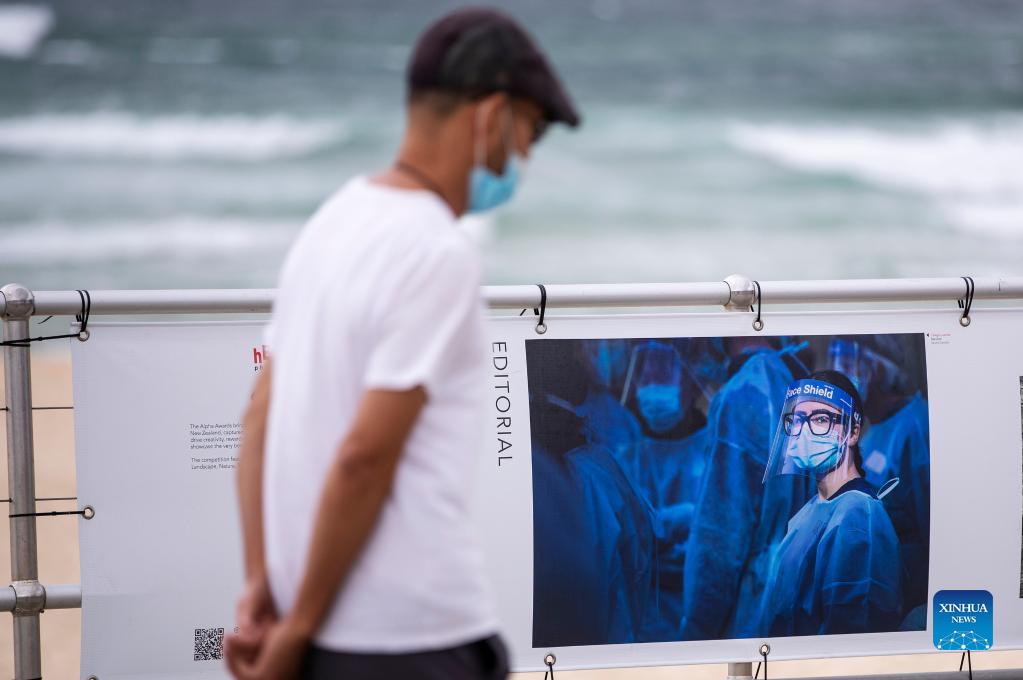
A man walks past a portrait of medical workers near a COVID-19 test center in Sydney, Australia on Dec. 16, 2021. As Australians crowd into shopping centers to buy last-minute Christmas presents and prepare to gather with their families over the summer holidays, the nation is simultaneously facing a looming wave of the Omicron variant of COVID-19. (Xinhua/Bai Xuefei)
SYDNEY, Dec. 16 (Xinhua) -- As Australians crowd into shopping centers to buy last-minute Christmas presents and prepare to gather with their families over the summer holidays, the nation is simultaneously facing a looming wave of the Omicron variant of COVID-19.
The latest surge in cases has hit hardest in the state of New South Wales (NSW). On Thursday, the nation's most populous state recorded 1,742 new locally acquired cases of COVID-19, an increase from the previous day's 1,360 cases.
This state has seen daily increases of 50 percent each day this week.
State health authorities have attributed the surge to the Omicron variant and predicted daily cases could reach 25,000 by January.
Chair of biostatistics and epidemiology at the University of South Australia, Professor Adrian Esterman, told Xinhua that according to his own modelling, as of Thursday, the virus had an effective reproduction number in NSW of 2.12, indicating cases would double every 3.7 days.
"The last time we saw a reproduction this high was July 17, during the early stages of the Delta wave, but now we are seeing exponential growth of a much higher base level of cases," Esterman said. "The slope is much, much sharper."
The state had promptly closed its borders to a number of Southern African countries after the first cases of Omicron were detected in late November. This also prompted the federal government to delay the scheduled opening of borders to international students and skilled workers.
Two weeks later, despite the sharp spike of COVID-19 cases and several super spreader events involving Omicron, the federal government has stuck to the scheduled reopening of its borders, and the NSW government has forged ahead, shifting the responsibility of avoiding infection on to the individual.
From Wednesday, there was no longer a legal requirement to wear masks in most indoor settings and unvaccinated people were allowed to enter non-essential venues.
"No one wants to isolate over the Christmas period, so take personal responsibility, socially distance, follow the rules that are in place," said NSW Premier Dominic Perrottet.
Professor Mary-Louise McLaws, epidemiologist from the University of New South Wales (UNSW), told Xinhua that while little is known about the new variant, besides its increased transmissibility even among the vaccinated, the government should be cautious.
"Making assumptions that we don't need to respond, and that everything will be fine, I think is not right," McLaws said.
"[Governments] prefer to think that they could focus on the economy, because it's been a couple of difficult years for them. But they have to really put that into context and work out how they can reduce the risk of ever going back into lockdown," she said.
Esterman said the rapid spread of the Omicron variant, despite Australia's very high vaccination rate, was an indicator that vaccination alone was insufficient to prevent a major outbreak.
He believed the government should make efforts to continue with health measures that would not have a large impact on businesses, such as mask mandates, and the bringing forward of booster shots.
"There is a high probability that ATAGI (Australian Technical Advisory Group on Immunization) will shorten the time from second dose to booster to try and put the brakes on the increasing number," he said.
Infectious diseases physician and microbiologist at the University of Queensland (UQ) Dr Paul Griffin told Xinhua that the government should ramp up vaccination facilities rather than wind them back, as many states have done as they have reached higher percentages of double-dose vaccinations.
"If we can scale up all those interventions, then I think we don't need to rely on those harsh restrictions, and get our balance back, keep people engaged and move forward as a population in a safe and sensible way," Griffin said.
McLaws refuted the idea of shifting focus on to the number of hospitalizations rather than daily cases, which she believes are still the most important metric in allowing individuals to assess their levels of risk.
"I'm very concerned that the government will stop telling the public what the numbers of cases are, and will only tell us the number of hospitalized cases, which will not help public health response," she said.
Moreover, she highlighted the lived experience that hospitalizations in NSW had lagged behind case numbers in each of its waves.
"There's usually, in NSW, a two-week change between case numbers and hospitalization ... It's just maths. When the numbers start going up, mathematically, the numbers in hospitals may go up as well," she said.
Esterman agreed that low hospitalizations should not be the only metric by which governments assess the damage of the virus.
"The government argument is that hospitalizations are now more important than cases, and as long as hospitalizations stay low, it doesn't matter if case numbers go up," said Esterman.
"The flaw in that argument is that they are forgetting about long COVID. This can affect both symptomatic and asymptomatic people," he noted.
McLaws also pointed to "selection bias", or only reviewing the outcomes of severe cases of COVID-19, as a potential barrier to understanding the wider impact the disease may have on a population.
This includes the risk of developing long term health issues after a case of COVID-19.
"Studies have shown that you may not start to acknowledge that you're feeling abdominal pain, difficulty breathing, depression, anxiety, suicide ideation, brain fog for a month, two months, three months, or six months," she said. Enditem
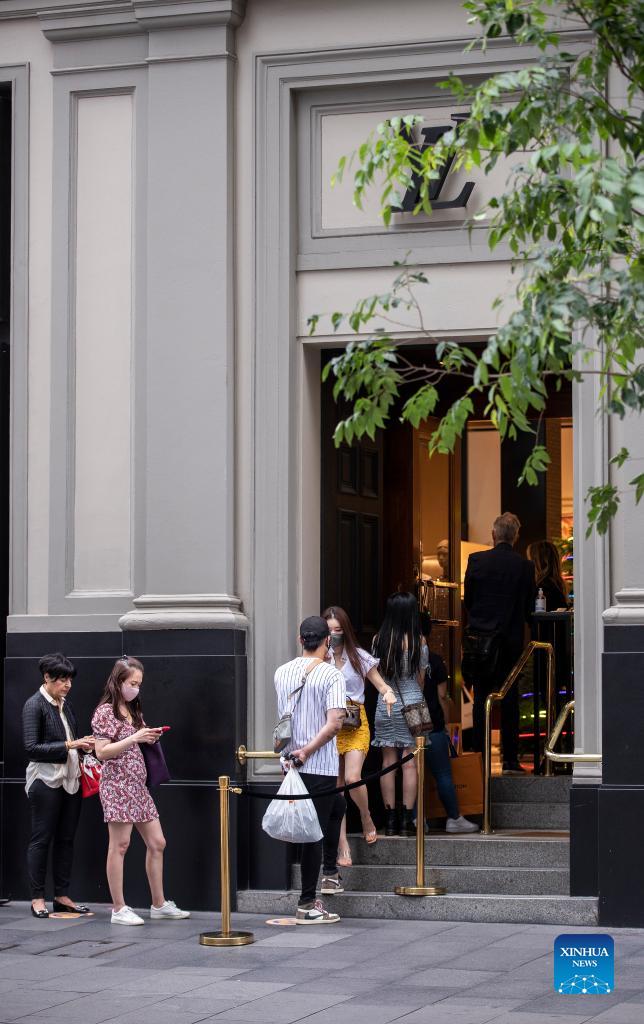
People line up for shopping in Sydney, Australia on Dec. 16, 2021. As Australians crowd into shopping centers to buy last-minute Christmas presents and prepare to gather with their families over the summer holidays, the nation is simultaneously facing a looming wave of the Omicron variant of COVID-19. (Xinhua/Bai Xuefei)
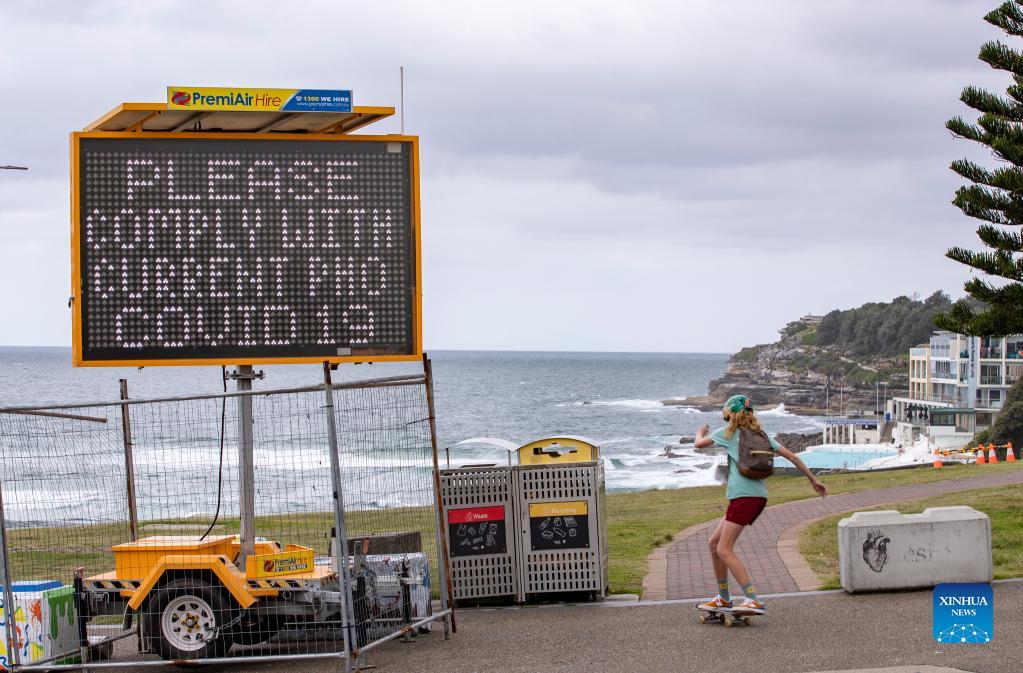
A child slides skateboard near a COVID-19 test center in Sydney, Australia on Dec. 16, 2021. As Australians crowd into shopping centers to buy last-minute Christmas presents and prepare to gather with their families over the summer holidays, the nation is simultaneously facing a looming wave of the Omicron variant of COVID-19. (Xinhua/Bai Xuefei)
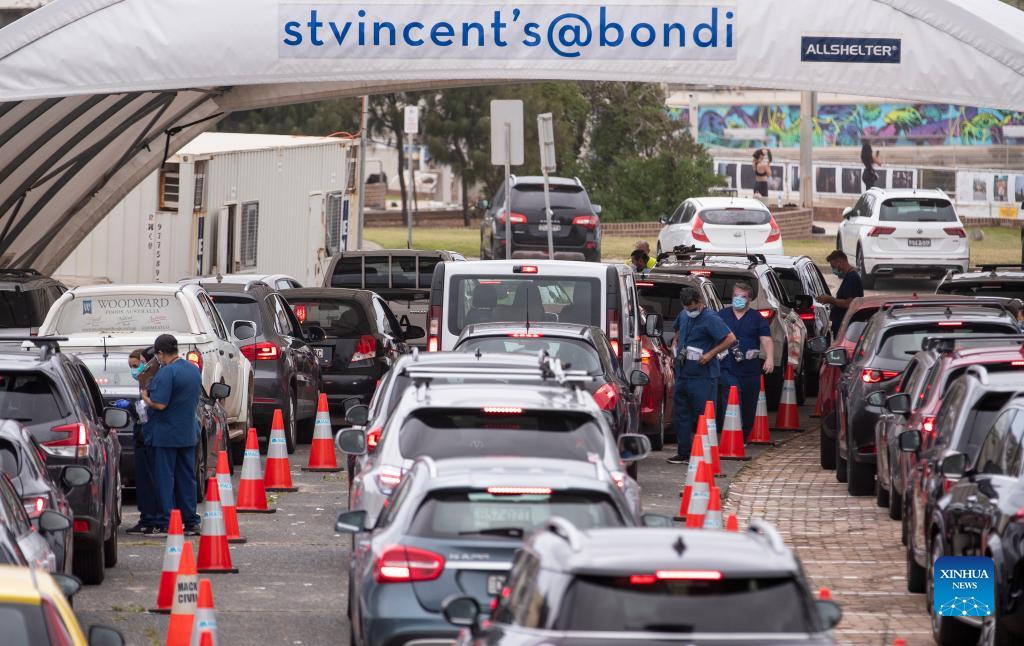
People wait to get tested at a COVID-19 test center in Sydney, Australia on Dec. 16, 2021. As Australians crowd into shopping centers to buy last-minute Christmas presents and prepare to gather with their families over the summer holidays, the nation is simultaneously facing a looming wave of the Omicron variant of COVID-19. (Xinhua/Bai Xuefei)
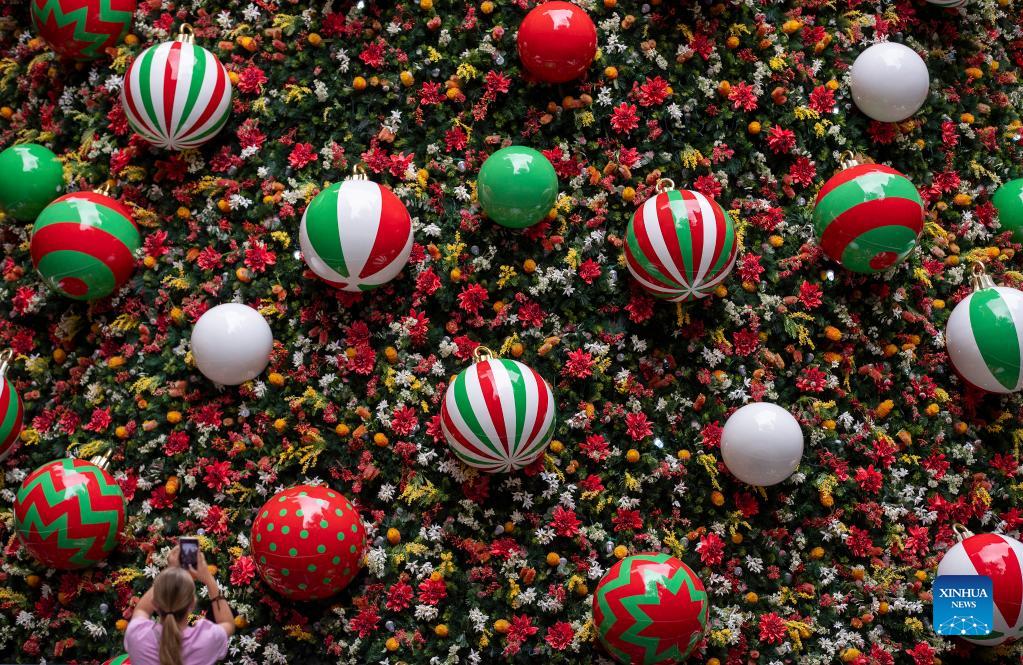
A woman takes photo beside a Christmas tree in Sydney, Australia on Dec. 16, 2021. As Australians crowd into shopping centers to buy last-minute Christmas presents and prepare to gather with their families over the summer holidays, the nation is simultaneously facing a looming wave of the Omicron variant of COVID-19. (Xinhua/Bai Xuefei)
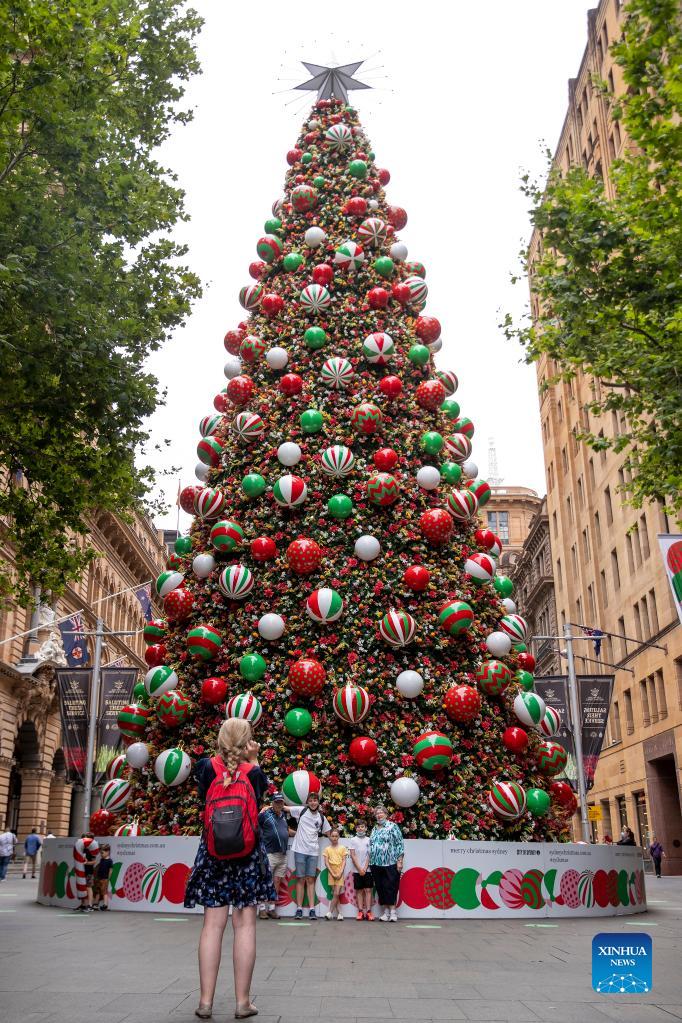
People take photos beside a Christmas tree in Sydney, Australia on Dec. 16, 2021. As Australians crowd into shopping centers to buy last-minute Christmas presents and prepare to gather with their families over the summer holidays, the nation is simultaneously facing a looming wave of the Omicron variant of COVID-19. (Xinhua/Bai Xuefei)
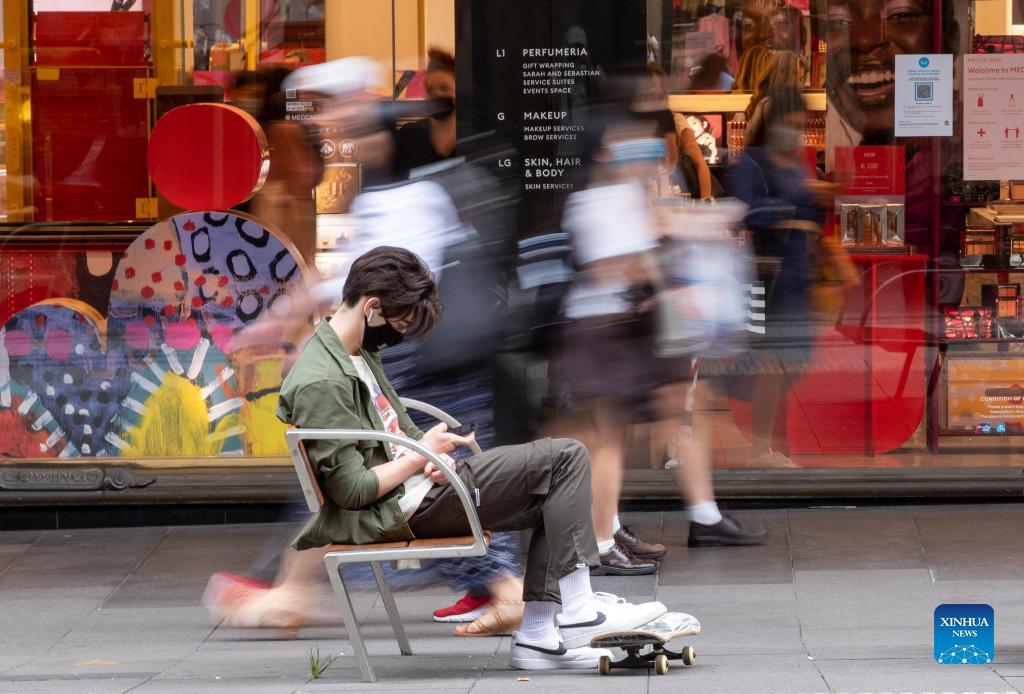
A man rests outside a shopping center in Sydney, Australia on Dec. 16, 2021. As Australians crowd into shopping centers to buy last-minute Christmas presents and prepare to gather with their families over the summer holidays, the nation is simultaneously facing a looming wave of the Omicron variant of COVID-19. (Xinhua/Bai Xuefei)




